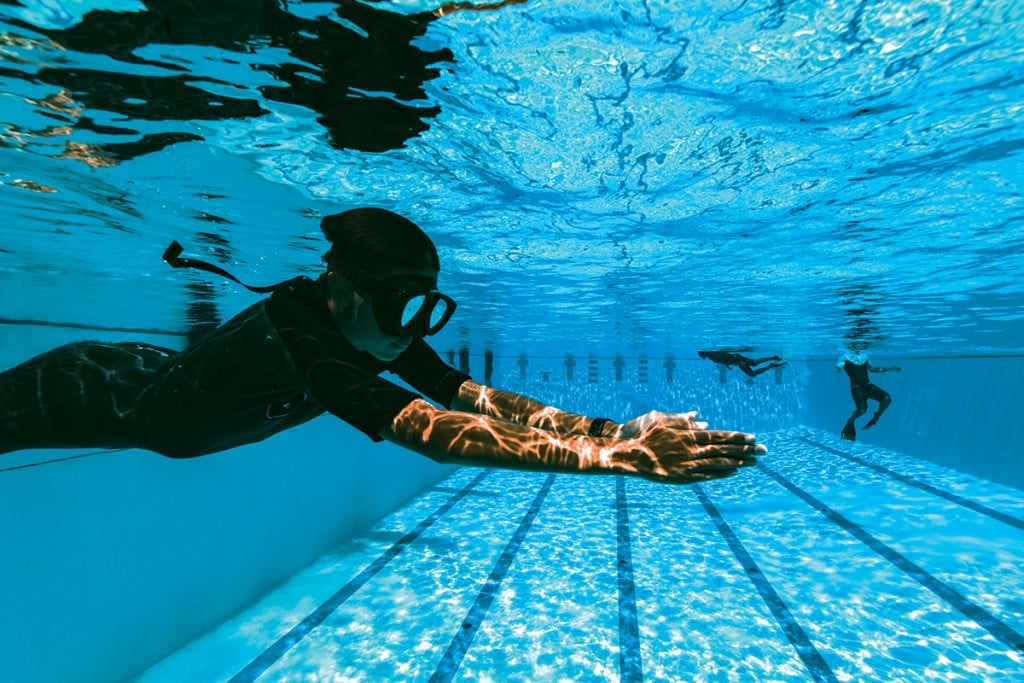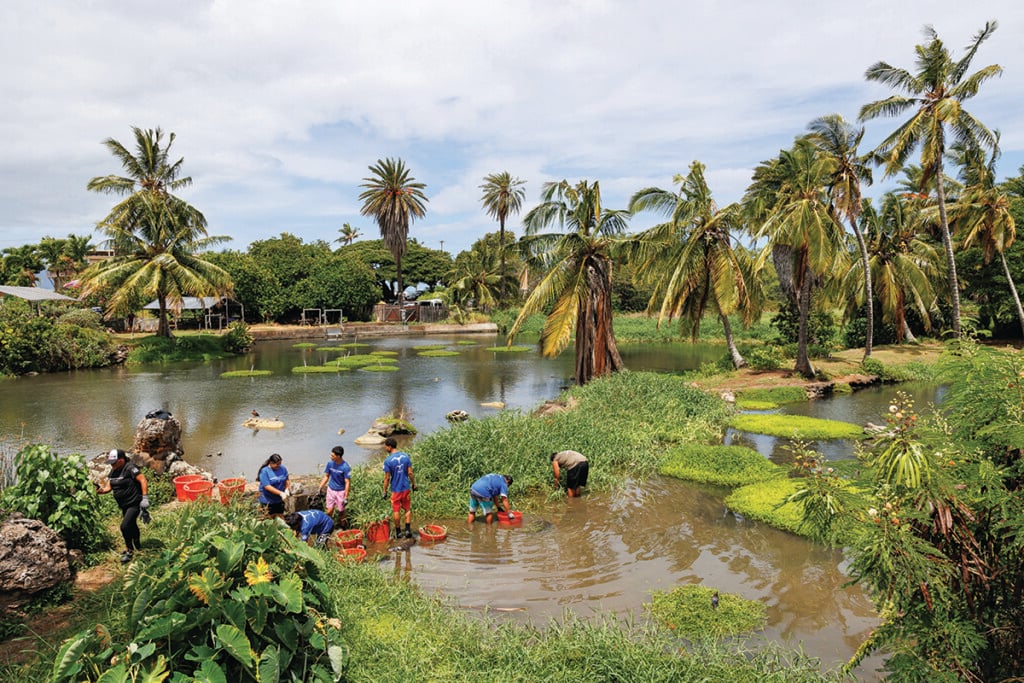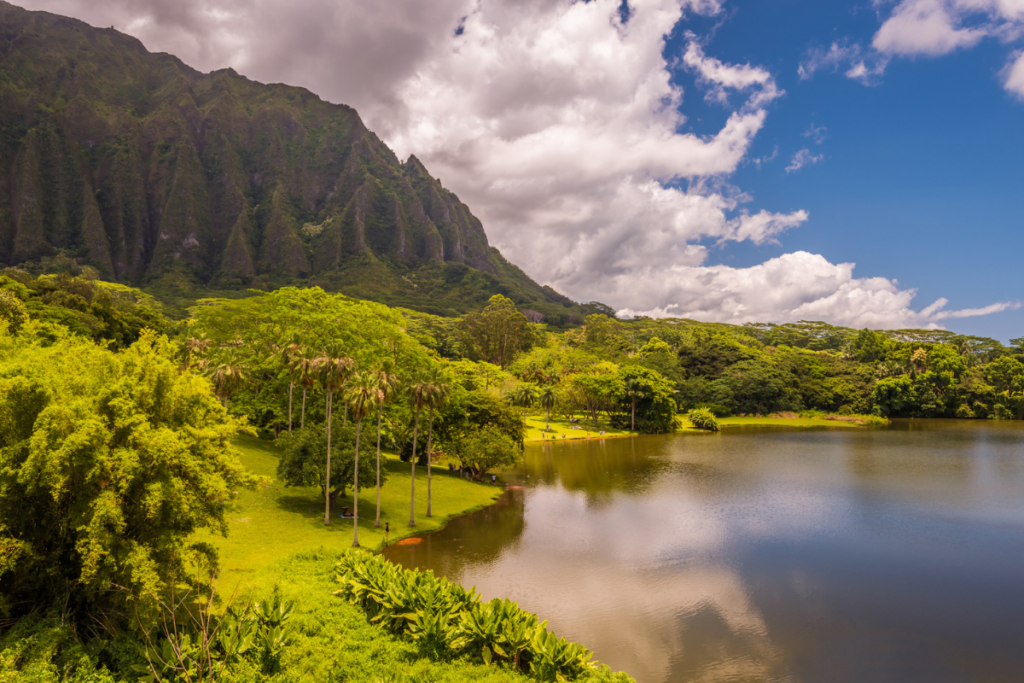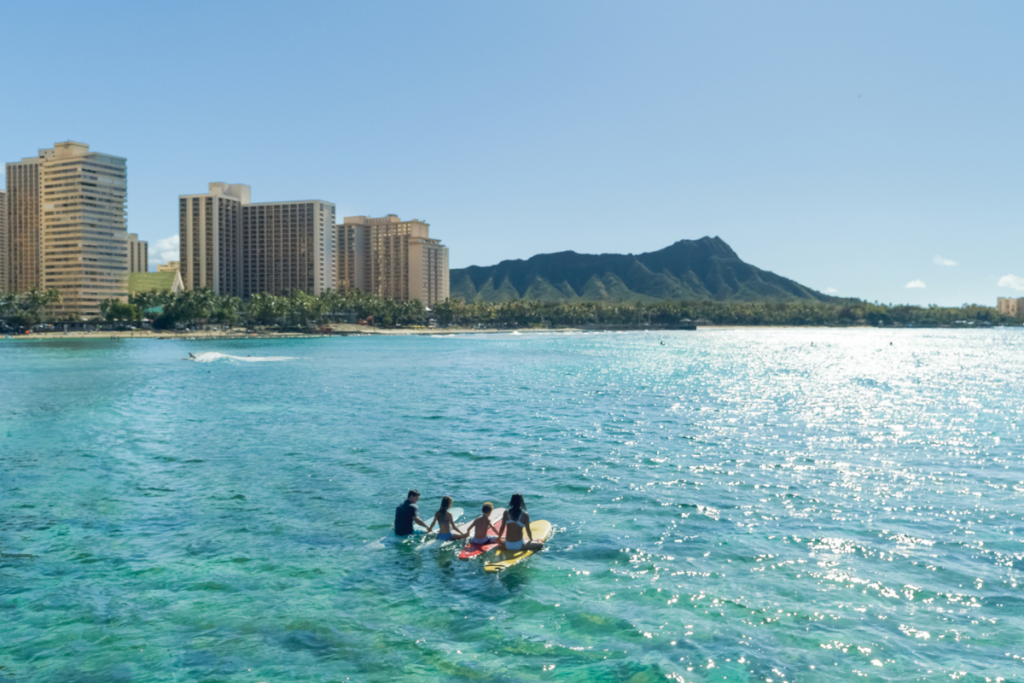This Surf Survival Course Could Save Your Life in the Ocean
Think you know how to breathe? The Hawai‘i Eco Divers’ Apnea Training & Surf Survival Course will make you think again.

When I was 9, I almost drowned at Waimea Bay on O‘ahu’s North Shore. My dad, a seasoned waterman, knew there was a swell on the way, but the bay looked flat and picturesque that morning as I floated in the shorebreak on my bodyboard.
But from there, things changed fast: A rip current dragged me away from shore and larger waves surged in at an alarming rate, each set bigger than the last. Fortunately, my father was able to swim out and rescue me, clutching me tight as we hurled ourselves into 8-foot waves to make it back to the beach. On that day I learned that the ocean should never be taken for granted and that as beautiful as it is, it can turn nightmarish in no time.
I’m thinking about that day as I pull into the parking lot of the K. Mark Takai Veterans Memorial Aquatic Center in Waipahu. It’s here that Ricardo Taveira teaches the first part of his Apnea Training & Surf Survival course, which is spread across two eight-hour days. Born in Brazil, Taveira’s traveled the world, going to college in Canada and surfing off-the-charts locales before moving to Hawai‘i, where he started his own dive and ocean adventure company, Hawai‘i Eco Divers.

Photo: Miles O’Sullivan
The first half of the course’s first day is not spent in a pool or the ocean but in what reminds me of my middle school classroom. Taveira explains to us, in the simplest terms possible, how to breathe properly—not through the chest but through the diaphragm, just below the lungs. He’s a great teacher, even tackling more complex physiological issues like how our bodies convert oxygen into carbon dioxide. It makes sense that Taveira’s so experienced; he’s been working on the contents of the course and its layout for the past eight years, incorporating feedback from former students, Hawai‘i lifeguards and rescue swimmers.
As we break for lunch, I share a mango with a blond Californian named Justin. He’s taking the class because he wants to feel more comfortable in big waves. Another student, Daniel, is looking to photograph Pipeline, the notoriously vicious surf break, from the water and, like Justin, realizes he needs to know more about how to survive in tumultuous waters. Maria, from Brazil, had a near-drowning experience similar to my own and just wants to feel comfortable in the ocean again. I find that this pursuit of general ocean safety and the know-how to survive a terrible situation, much like the one I found myself in at Waimea so many years ago, is common among our class of 10.

Photo: Miles O’Sullivan
Finally, we’re in the pool. And although Taveira was a happy, wise-cracking Brazilian just moments ago, he’s transformed into a serious swim coach. Before we get to apnea training, the class learns how to rescue a swimmer who has blacked out or lost motor control. I take this lesson to heart since I spend so much time in the water with people I care about—my girlfriend, fellow surfers I’ve befriended, my own father—and it’s comforting to know that you can swim them to safety if you have to, without blocking their airways. After our brief lifesaving course, it’s time to get in the water.
Here’s the scenario: We’re surfing a beach break in Mexico (really, just a swimming pool in Waipahu). We’ve wiped out and are now caught in the worst possible place, the impact zone, where a series of waves are breaking on our heads. I kick off the pool wall and hold my breath for as long as possible while swimming 50 meters. Watching over us, Taveira reminds us it’s not about how fast we’re going but how long we’re holding our breath. We’re trying to get comfortable with being uncomfortable, embracing the feeling of wanting to breathe but not being able to.
(This was just one of the exercises we did in the pool. We also held our breath for timed intervals, from one minute all the way up to three minutes and mimicked what it feels like being tossed around in large waves as our assigned partners pushed, pulled and turned us underwater.)
Wet, cold and tired, we climb out of the pool and towel off. Taveira tells us all to get a good night’s rest—trust me, I will, I say to myself—since we’ll be meeting at Waimea Bay at 8 a.m. sharp.
Fast forward to day two of the course: I haven’t taken a breath in a while. I’m on the grass next to the Waimea Bay parking lot, staring up at a tree branch that’s dancing gently in the wind. Internally, I feel at peace. My diaphragm, however, is convulsing violently and the built-up CO2 in my lungs is begging to be set free. I feel the need to breathe, an almost burning sensation in the back of my throat, but I don’t have to breathe. After a few more meditative moments, I begin to experience a tingling sensation in my fingers, a sign, I’ve learned, that I’m close to losing motor control. It’s time for me to leave this unfamiliar mental state, so I take a breath. My ears are buzzing, I don’t really know why, and I look down at my watch. I’ve held my breath for three minutes and 45 seconds.
That’s the longest I’ve ever held my breath. The rest of the students are recovering from their own breathless meditation, and Taveira watches over them carefully. We’ve got a day of swimming in the bay ahead of us, working on the same breath-holding and ocean safety routines we learned in the pool; however, for me, this was the apex of my apnea training. I never thought I could hold my breath for such a long time, and I now know that as long as I stay calm and just hold on to the oxygen in my lungs, I’ll have a better chance of surviving even the heaviest of wipeouts. Looking out at the bay and the flatness of the ocean, I’m reminded of that day the sea turned on me. At least now, if something similar happens again, I know I’ll be ready.
Apnea Training & Surf Surf Survival
To take the course, call (808) 499-9177 or visit hawaiiecodivers.com.


